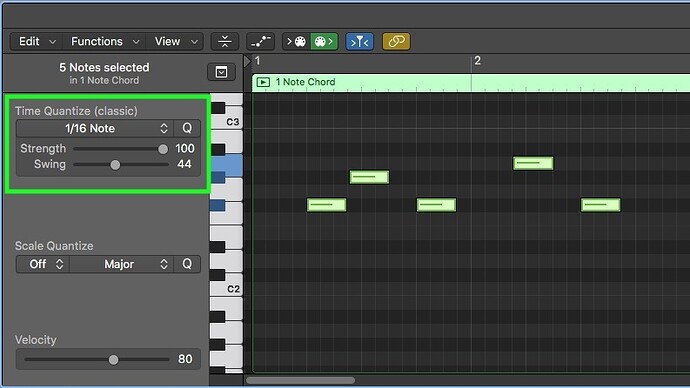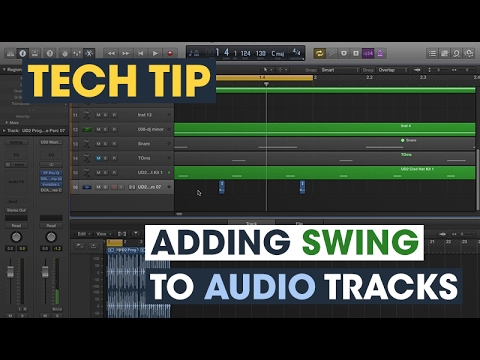Love Protoculture’s courses - looking forward to the next one. So many new techniques and tips to learn. First time I’ve used granular synthesis to create drones, although I used Cumulus for this. My take on this track - Progressive Trance 2019 - YouTube
Ah what a shame it’s missing his process for creating chord progressions and melodies #sadface
Great course otherwise!
Great course. I learned a lot!
I don’t have much of a ‘process’ per se. I’ve seen a lot of guys doing tutorials where they sort of over analyze everything as far as chord structure is concerned, but I really just sit down and play stuff till it sounds good. I’m fortunately blessed to be able to play a lot of stuff live on the keyboard and just hit record. I find it hard to explain why I go for certain chords… it’s more just feeling and intuition more than anything else.
Cool swing tip on the free Kick Video! Thanks!
Hey Protoculture, any progress on re-uploading a version of the project file with 24-bit audio files? Or any advice from anyone here about good free software to use to convert 32-bit audio files to 24-bit? Thanks!
Audacity should be able to do this.
Yep, good point with Audacity as a free software to achieve this.
BTW, I did put a ticket with Ableton Support about this & they came back to me telling that this has been escalated to their development team among other similar requests but no confirmation of a future fix until now.
They also asked me to test the following : trying to convert those 32bit files to 32bit Floating Point and import them into Live again. I had a failure with “Fission” under MacOS but it did work with “iZotope RX7 Audio Editor” and I think that Audacity should be able to do the same conversion according to the Import/Export features from their site, you can also give this a try @Toryn and if that’s working then you have a chance to retain the 32bit files format inside Live.
Thanks Nate. Great course and lots for me to work on.
Great insights as always ![]()
Hi there, What is the Swing Percentage (15%) that protoculture is kept putting his Audio’s at and midi too I believe. is it for rhythm? any links so i can understand this better in my DAW ( I use Logic pro x) Thank you !
Yep, swing is usually used to add variation to your beats. Basically what’s happening is that the midi or audio affected by a certain amount of “swing” will be slightly moved from their original position. That will result in a more “human” playback timing, giving your beat ( or other instruments ) a different groove.
For Midi you can just select the regions or notes you want to affect and use the “Swing” amount value paired with the Q-Strenght ( Quantization Strenght ) value, it’s set to max 100 by default.
For applying swing to Audio Tracks, check this Tech-Tip from Chris here :
Very nice and detailed course from Protoculture. Im happy with the content. Keep up the good work.
Took me a while to get through the whole course, but well worth it… learnt a lot… Thank you very much ![]()
Uoool
Can’t remember exactly what I use here… but usually I’m around 25% swing.
Nate, I’m just now taking this course and am ever grateful to learn your process. Have been a fan of your music since the early 2010s and I’ve enjoyed hearing your music evolve over the years!
I have a couple questions about your process that I hope you can provide insight on. I know many producers like me struggle with making progress on tracks due to too much time spent on composition and also sample diving.
When it comes to sketching out melodies, do you have a general criteria for avoiding over-complicating melodies? Is simpler melody almost always better with progressive tunes? I’m classically trained with a decent music theory background, but I feel that might actually be working against me when it comes to composing for trance. In this course you sketched out the melodic elements in 30min, whereas in my current production I’ve totally pivoted on melodic elements several times!
As for sample diving, especially for things like transition FX or drum loops, what makes one sample really better than another? With enough time and processing, can’t you get just about any drum sample to sound decent in a mix? I personally spend a lot of time potentially putting lipstick on a pig, so I’d love to hear how you approach this after all your years of experience.
Thanks again for the course and I appreciate any more helpful tips you’d have to spare!
Another brilliant course from Protoculture, learnt so much.
Thanks for recording this.
Thank you, wonderful course!
nice work thank you !

